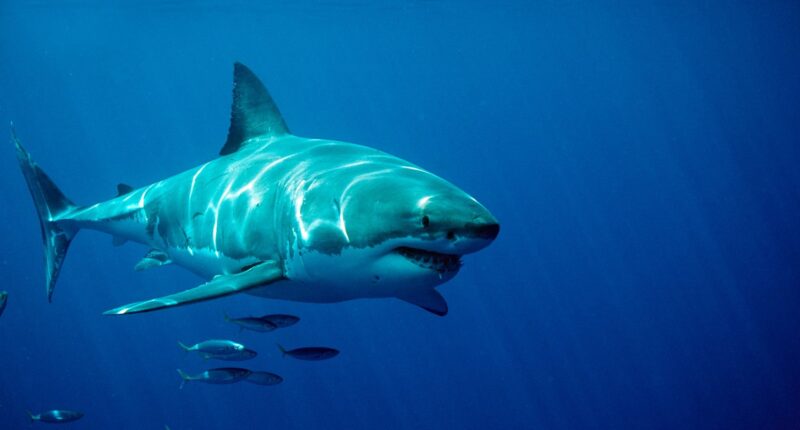THE biggest white shark ever tagged by scientists has been spotted heading towards a popular tourist beach.
Named ‘The Contender’, the vast beast hasn’t been heard from for several weeks.




The massive shark has been skulking around the North Carolina coast for the past few months.
Scientists keep tabs on its location through a tracker that “pings” whenever the shark’s fin breaks the water’s surface.
But after several weeks off grid, the behemoth has surfaced again – this time near the popular North Carolina tourist area of Pamlico Sound.
The latest ping sounded on June 7, just before 10pm.
The scientists’ tracking map appears to show The Contender making a move north since it last appeared.
Weighing a whopping 1,600 pounds, the shark was first tagged on January 17 this year.
The Contender started its journey about 45 miles off the Florida-Georgia border.
It is the largest ever shark tagged the research group OCEARCH.
The adult white shark measures a staggering 13 feet and nine inches.
According to Dr. Harley Newton, who is the chief scientist and veterinarian at OCEARCH, white sharks are currently in the process of migrating from their winter habitats in the south to their feeding grounds in the northeastern United States and Atlantic Canada as it transitions from late spring to early summer.
The Contender’s previous ping came on May 21, when it was much further south along North Carolina’s coast.
However, beachgoers need not panic, as the shark is still swimming a fair distance from the coastline.
Dr. Newton pointed out that the sharks tracked by their global tracker typically spend some time near the Outer Banks before heading further north, much like the white shark Contender is currently doing.
He suggested that the reason for this behavior could be the abundance of food in the area, providing an opportunity for the sharks to eat and build up reserves before embarking on a long journey spanning over 1,000 miles or more.
OCEARCH’s website calls Contender “the ultimate ocean warrior” and a “mature male” specimen.
It adds that his nickname comes in honour of Contender Boats – an old partner of the research group.
The website says: “The SPOT tag deployed on Contender will provide valuable real-time data for approximately five years, helping us track his movements and understand his migration patterns.
“Additionally, we’ve collected important biological samples, including urogenital material, which are currently being analysed.”

















